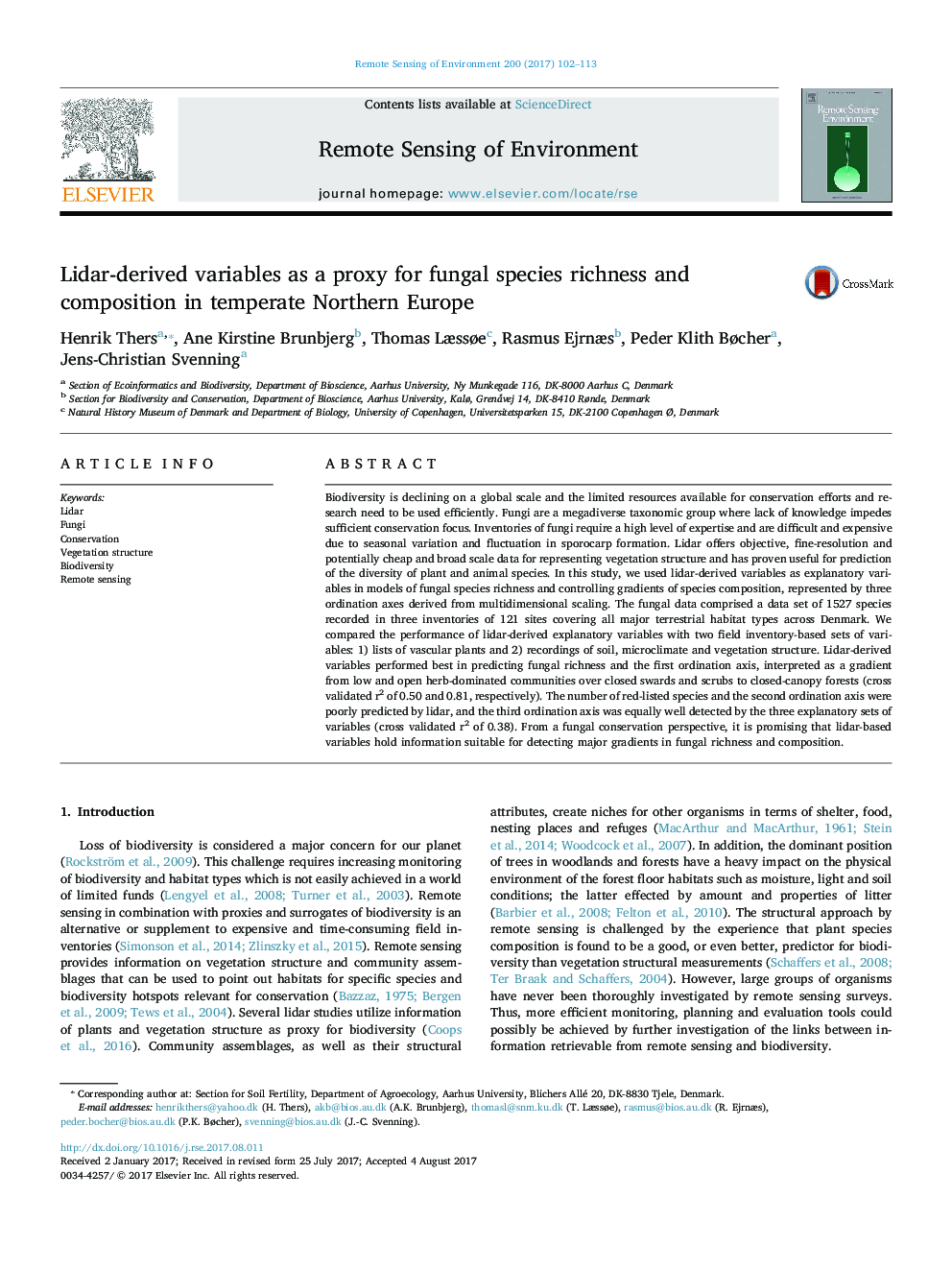| کد مقاله | کد نشریه | سال انتشار | مقاله انگلیسی | نسخه تمام متن |
|---|---|---|---|---|
| 5754724 | 1621200 | 2017 | 12 صفحه PDF | دانلود رایگان |
عنوان انگلیسی مقاله ISI
Lidar-derived variables as a proxy for fungal species richness and composition in temperate Northern Europe
دانلود مقاله + سفارش ترجمه
دانلود مقاله ISI انگلیسی
رایگان برای ایرانیان
کلمات کلیدی
موضوعات مرتبط
مهندسی و علوم پایه
علوم زمین و سیارات
کامپیوتر در علوم زمین
پیش نمایش صفحه اول مقاله

چکیده انگلیسی
Biodiversity is declining on a global scale and the limited resources available for conservation efforts and research need to be used efficiently. Fungi are a megadiverse taxonomic group where lack of knowledge impedes sufficient conservation focus. Inventories of fungi require a high level of expertise and are difficult and expensive due to seasonal variation and fluctuation in sporocarp formation. Lidar offers objective, fine-resolution and potentially cheap and broad scale data for representing vegetation structure and has proven useful for prediction of the diversity of plant and animal species. In this study, we used lidar-derived variables as explanatory variables in models of fungal species richness and controlling gradients of species composition, represented by three ordination axes derived from multidimensional scaling. The fungal data comprised a data set of 1527 species recorded in three inventories of 121 sites covering all major terrestrial habitat types across Denmark. We compared the performance of lidar-derived explanatory variables with two field inventory-based sets of variables: 1) lists of vascular plants and 2) recordings of soil, microclimate and vegetation structure. Lidar-derived variables performed best in predicting fungal richness and the first ordination axis, interpreted as a gradient from low and open herb-dominated communities over closed swards and scrubs to closed-canopy forests (cross validated r2 of 0.50 and 0.81, respectively). The number of red-listed species and the second ordination axis were poorly predicted by lidar, and the third ordination axis was equally well detected by the three explanatory sets of variables (cross validated r2 of 0.38). From a fungal conservation perspective, it is promising that lidar-based variables hold information suitable for detecting major gradients in fungal richness and composition.
ناشر
Database: Elsevier - ScienceDirect (ساینس دایرکت)
Journal: Remote Sensing of Environment - Volume 200, October 2017, Pages 102-113
Journal: Remote Sensing of Environment - Volume 200, October 2017, Pages 102-113
نویسندگان
Henrik Thers, Ane Kirstine Brunbjerg, Thomas Læssøe, Rasmus Ejrnæs, Peder Klith Bøcher, Jens-Christian Svenning,